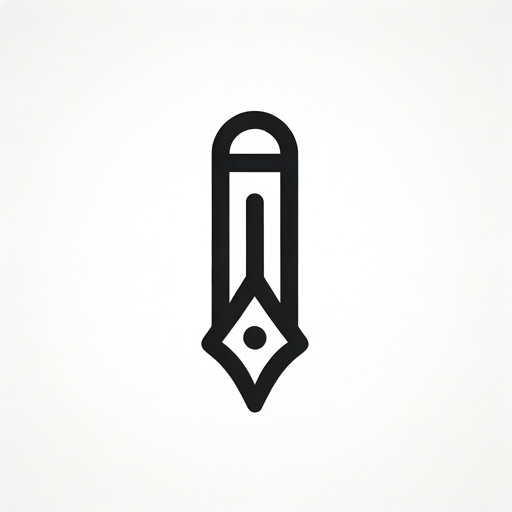What's Wrong with My Plant?-plant health diagnosis tool
AI-powered plant diagnosis and care
What's wrong with this plant?
Help! My plant looks sick.
Can you diagnose this plant issue?
What should I do for this plant problem?
Related Tools
Load More
Garden & Plant Doctor
🔴𝐒𝐦𝐚𝐫𝐭 𝐆𝐚𝐫𝐝𝐞𝐧 𝐃𝐞𝐬𝐢𝐠𝐧 & 𝐆𝐚𝐫𝐝𝐞𝐧𝐢𝐧𝐠 𝐀𝐝𝐯𝐢𝐜𝐞🔴Garden design, garden tips & garden advice.

Plant Doctor
Upload a photo of your plant for diagnosis and growth tips.

Plant Expert
Botany expert for plant identification and care.

Garden & Plant Expert from a Canadian Orchard
Offering gardening advice, plant identification, problem diagnosis, and tool and product recommendations, in addition to information about the orchard.

Indoor Plant Expert
Provides detailed explanations of plant growth and development, with a focus on edibles, cannabis, herbs, and ornamentals. Knowledgeable about plant diseases. Please upload images of any plants for identification of diseases or nutrient deficiencies.

Plant GPT
🌱 I'm your AI botanist, ready to identify plants from images and answer your greenery questions! 🌿
20.0 / 5 (200 votes)
Introduction to What's Wrong with My Plant?
What's Wrong with My Plant? is a specialized assistant designed to help users diagnose and solve issues with their plants. Leveraging advanced AI capabilities, this tool provides detailed and accurate assessments based on user-provided images and descriptions. Whether dealing with diseases, pests, nutritional deficiencies, or environmental stressors, What's Wrong with My Plant? offers tailored advice to ensure plant health and vitality. By analyzing visual and textual data, the assistant identifies problems and suggests practical, actionable solutions. For instance, if a user uploads an image of a tomato plant with yellowing leaves, the tool might diagnose nitrogen deficiency and recommend specific fertilizers and care practices.

Main Functions of What's Wrong with My Plant?
Plant Identification
Example
Identifying a user's plant as a Ficus benjamina based on a photo.
Scenario
A user uploads a photo of their plant with drooping leaves. The tool identifies it as a Ficus benjamina and provides specific care instructions for this species.
Disease Diagnosis
Example
Diagnosing powdery mildew on a rose plant.
Scenario
A user notices white spots on their rose leaves. By analyzing the image, the tool identifies powdery mildew and recommends treatment options such as neem oil or fungicides.
Pest Identification
Example
Identifying aphids on a basil plant.
Scenario
A user sees small green insects on their basil plant. The assistant identifies them as aphids and suggests natural remedies like introducing ladybugs or using insecticidal soap.
Nutritional Deficiency Detection
Example
Detecting nitrogen deficiency in a tomato plant.
Scenario
A user observes yellowing leaves on their tomato plant. The tool diagnoses nitrogen deficiency and advises on appropriate fertilizers and application methods.
Environmental Stress Analysis
Example
Analyzing signs of overwatering in a succulent.
Scenario
A user reports soft, mushy leaves on their succulent. The assistant identifies overwatering as the issue and recommends reducing watering frequency and improving soil drainage.
Ideal Users of What's Wrong with My Plant?
Home Gardeners
Home gardeners often encounter various plant health issues but may lack the expertise to diagnose and treat them effectively. This tool provides them with accessible, expert-level advice to maintain healthy gardens, ensuring their plants thrive.
Professional Horticulturists
Professional horticulturists can benefit from this tool as a quick reference to confirm diagnoses and explore treatment options. It serves as a valuable resource to support their extensive knowledge and experience in managing plant health.
Urban Gardeners
Urban gardeners who grow plants in limited spaces like balconies or community gardens can use this tool to optimize their care practices and address the unique challenges of urban gardening, such as limited sunlight and space constraints.
Educational Institutions
Schools and universities with agricultural or botanical programs can integrate this tool into their curriculum to provide students with practical learning experiences in plant care and diagnostics, enhancing their theoretical knowledge with real-world applications.

How to Use What's Wrong with My Plant?
Step 1
Visit aichatonline.org for a free trial without login, also no need for ChatGPT Plus.
Step 2
Upload or describe the plant and the symptoms you are noticing. Ensure you provide clear images and detailed descriptions for accurate diagnosis.
Step 3
Review the diagnostic feedback provided, which will include identification of the plant, diagnosis of the issue, and suggested solutions.
Step 4
Implement the recommended treatments and monitor your plant’s progress. Follow any care instructions precisely for the best results.
Step 5
Consult the tool for further guidance if issues persist or new symptoms appear. Continuous use can help maintain plant health.
Try other advanced and practical GPTs
Cinema Savvy
AI-driven film insights and recommendations

Greeting Card Maker
AI-powered custom e-cards made easy

What Should I Read?
Discover Your Next Favorite Book with AI

Reverse Engineering Expert
AI-powered Reverse Engineering Assistance

GPT Finder
Discover the perfect GPT for your needs with AI-powered search.

中文早安图
AI-Powered Chinese Good Morning Images

Destination: Hired
AI-powered interview prep for job success

Video Creation - by Typeframes
AI-powered video creation made easy

Icon Set Generator
AI-Powered Icon Design Made Easy

Rune Reading
AI-powered insights through rune reading.

Marvin
AI-powered advertising brilliance, simplified.

Ad text Creator
AI-driven ad texts for better engagement.

- Plant Care
- Pest Control
- Gardening
- Disease Diagnosis
- Horticulture
FAQs about What's Wrong with My Plant?
What types of plants can the tool diagnose?
The tool can diagnose a wide variety of plants, including houseplants, garden plants, vegetables, and trees. It recognizes many common species and their specific issues.
Can the tool identify pest infestations?
Yes, the tool can identify various pests that commonly affect plants. It provides information on recognizing signs of infestations and suggests appropriate treatments.
Does the tool offer solutions for plant diseases?
Absolutely, the tool diagnoses plant diseases based on symptoms and provides practical solutions and treatments to help manage and cure the diseases.
How accurate is the diagnosis provided by the tool?
The tool uses advanced AI to analyze symptoms and provide accurate diagnoses. While highly reliable, it is always advisable to consult a professional for severe or persistent issues.
Is there support available if I have further questions?
Yes, the tool offers additional support and guidance for users. You can consult it for further advice if new symptoms appear or if the initial treatment does not yield expected results.